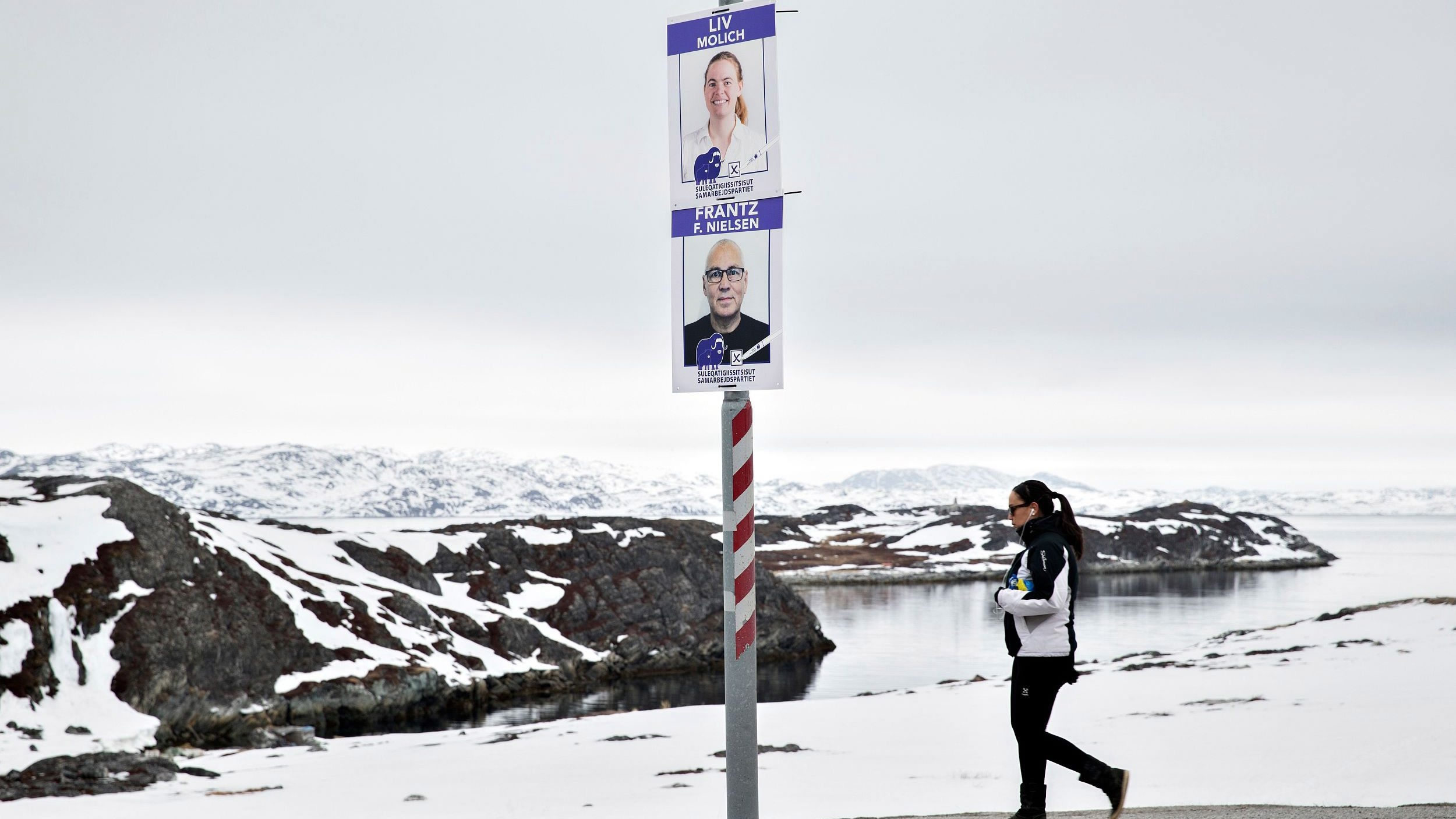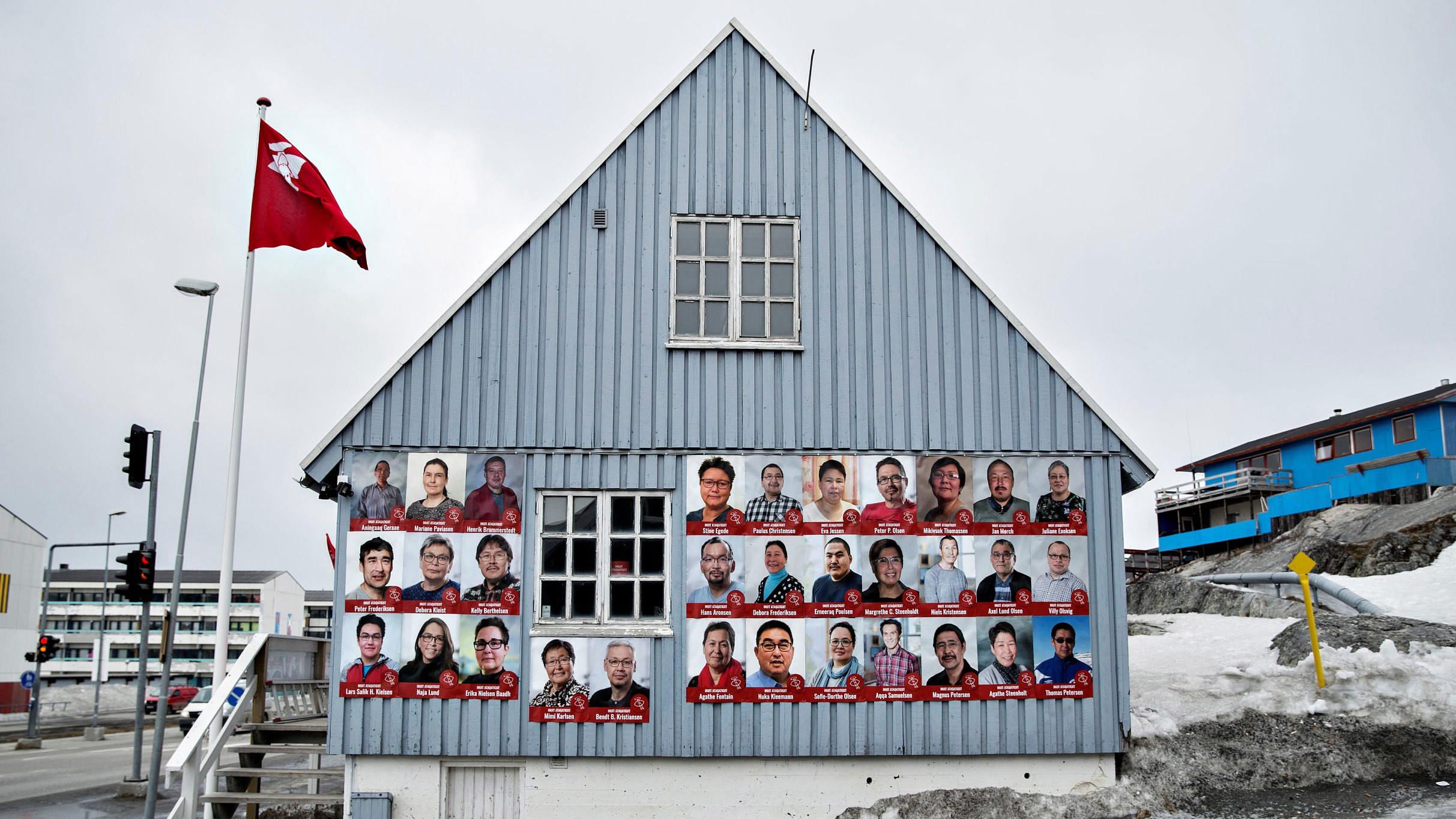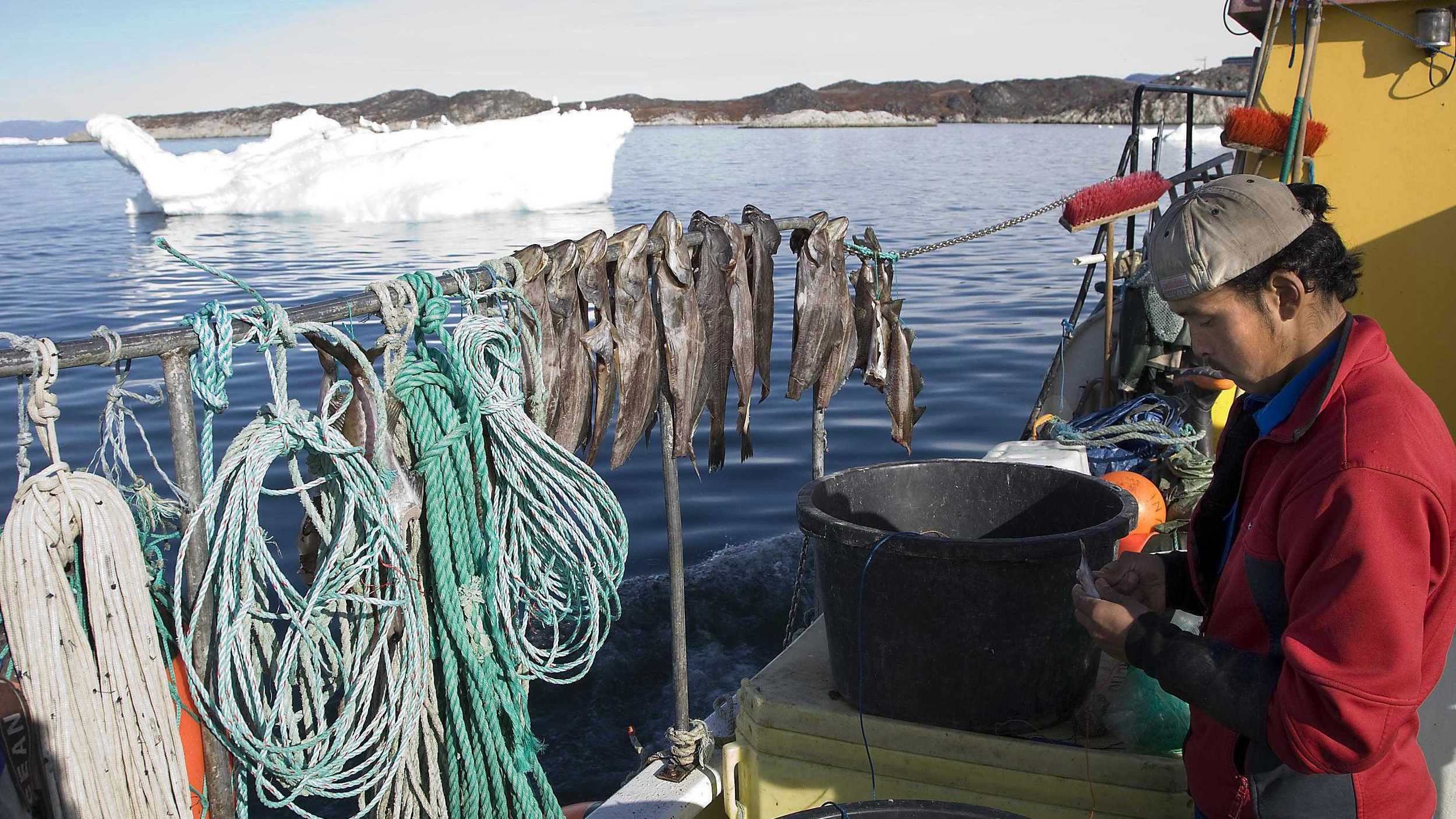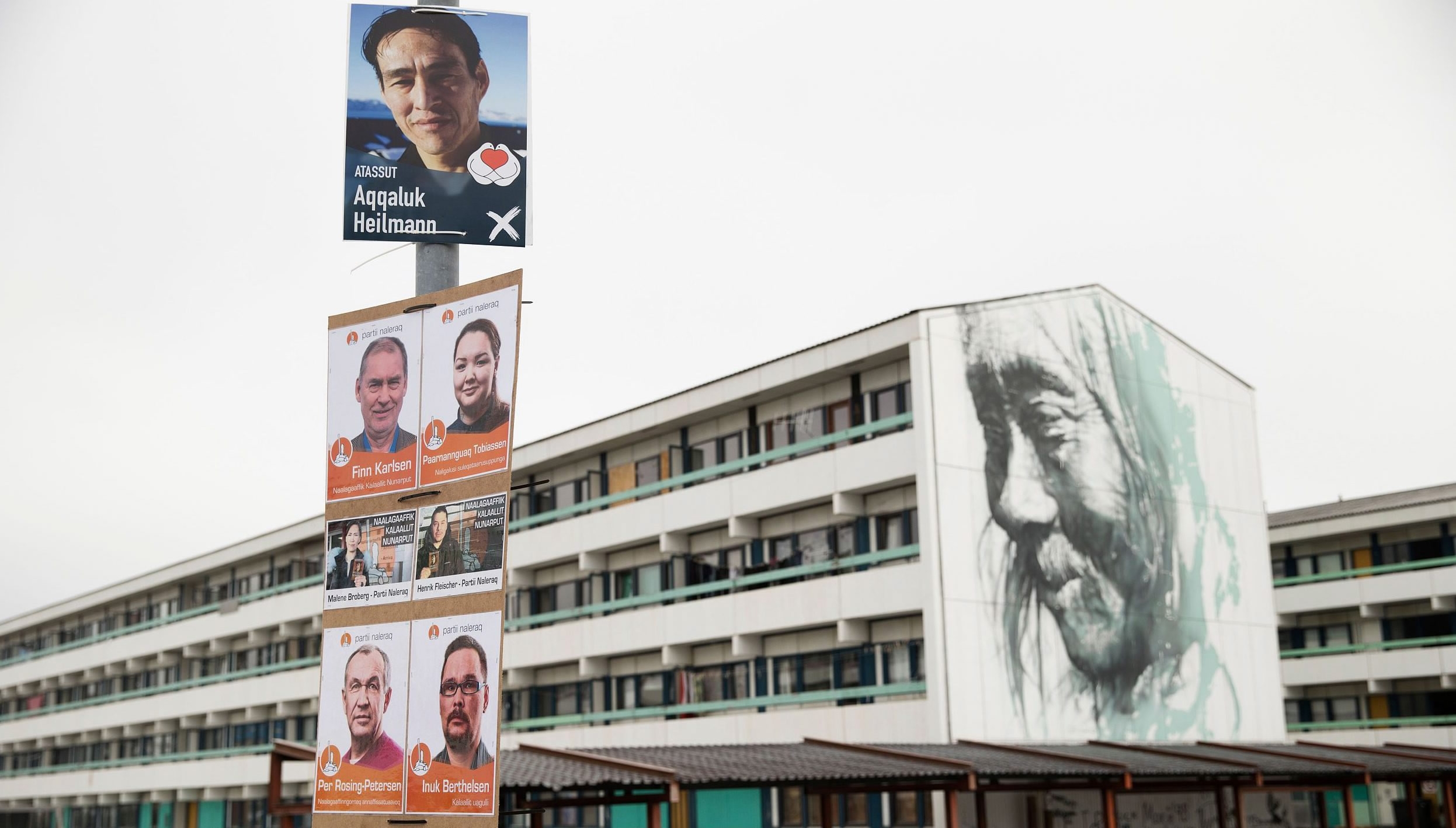
Politics
11:24, 24-Apr-2018
Greenland election: World's largest island goes to polls
By John Goodrich

Voters in Greenland – the world's largest island – will cast ballots in a parliamentary election on Tuesday.
The island, an autonomous territory of Denmark, is looking to boost its economy, which is largely reliant on a strong fishing industry and subsidies from Copenhagen, through mining and tourism development.

Electoral posters in Nuuk, Greenland, April 19, 2018. /VCG Photo
Electoral posters in Nuuk, Greenland, April 19, 2018. /VCG Photo
The government in capital city Nuuk has tried to attract foreign investment into its untapped hydrocarbon and mineral resources as well as tourism, but a lack of infrastructure has limited development.
What are the issues?
Greenland, which has a population of around 56,000, has a series of acute social problems that need to be addressed. Poor housing, a low education level and unemployment are priorities.
The Danish government subsidizes the island's economy, which is currently largely dependent on the fishing industry – fish account for over 90 percent of exports.

Fishing is the main industry in Greenland. /VCG Photo
Fishing is the main industry in Greenland. /VCG Photo
Infrastructure spending is also on the agenda, with Bloomberg reporting that the parties are debating how to raise the 600 million US dollars required to build a new airport. The island, which is hopeful of creating a tourism industry to match that of Iceland, has attracted a growing number of visitors in recent years thanks to the arrival of cruise liners.
The island, about 81 percent ice-capped, is hoping rising commodity prices, which can help attract foreign investment to get a flagging mining program back on track. In 2013, the parliament voted to end the territory's 25-year ban on mining radioactive materials such as uranium.

Electoral posters in Nuuk, Greenland, April 19, 2018. /VCG Photo
Electoral posters in Nuuk, Greenland, April 19, 2018. /VCG Photo
Hype about a possible mining boom in Greenland has faded thanks to bureaucratic delays and a commodity price slump. But with the island's sole producing mine starting up last year and an anorthosite project due to begin operations this year, Greenlanders' hopes are up again.
Who are the candidates?
Greenland's 40,000 eligible voters last went to the polls in 2014 when the social democrat Siumut party won more than a third of votes in the 31-seat parliament.
Kim Kielsen, a former policeman, became prime minister when Aleqa Hammond was forced to resign after a scandal involving spending of public money on hotels and flights.

Greenland's Prime Minister Kim Kielsen. /VCG Photo
Greenland's Prime Minister Kim Kielsen. /VCG Photo
In 2014 only 325 votes separated Siumut from the left-wing Inuit Ataqatigiit party, whose leader Sara Olsvig is in contention to be prime minister.
The most recent poll shows that the two parties are likely to continue working together in a coalition, possibly with Demokraterne, Greenland's third-biggest party.
What is Greenland's status?
Greenland, whose capital Nuuk is closer to New York than Copenhagen, became a Danish colony in the early 19th century but has gradually gained its own powers since World War Two.
The island was granted self-government in 1979 by the Danish parliament, and voted to take on greater autonomous powers in a referendum in 2008.
Although Greenland is largely self-governed, Denmark maintains control only over foreign affairs and defense policy in coordination with the island's parliament. Queen Margrethe II of Denmark is the territory's head of state.
(With input from agencies)
8403km

SITEMAP
Copyright © 2018 CGTN. Beijing ICP prepared NO.16065310-3
Copyright © 2018 CGTN. Beijing ICP prepared NO.16065310-3